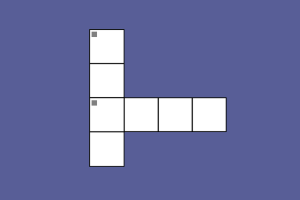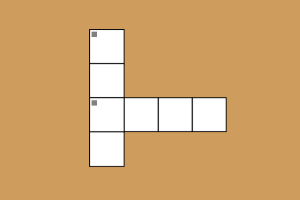The Loudest Stitch: Thirty Years of Judy Chicago and Audrey Cowan
July 23, 2011

Published: March 30, 2011
If there’s a consistency that feminist artist Judy Chicago should be credited with, it’s that she lacks subtlety. From photography to stitch work, when Chicago has something to convey, she spells it out for you in imagery that is, at times, offensively obvious. Take for example “Resolutions,” a series of needlework Chicago produced at the turn of the millennium to encourage social progress, and one of the collections now showing in the new exhibition, “Judy Chicago Tapestries: Woven by Audrey Cowan,” on display until June 19 at the Museum of Arts and Design (MAD) in Columbus Circle.
For “Resolutions,” Chicago commissioned experienced weavers to translate a series of her cartoons into needlework. The problem is, as is the case for much of what’s on display at MAD, the final product overshadows the initial idea. For instance, “Bury the Hatchet” portrays a Muslim, a Jew and a Catholic quite literally burying a bloody hatchet in the ground. The stitching is exceptional, but the imagery is simplistic. It begs the question then, what exactly Chicago should be credited with outside of providing the unimpressive outline for somebody else’s craftsmanship.
On March 1, MAD began a three-month run of Chicago’s work with tapestry weaver Audrey Cowan, and while it’s Chicago’s exhibition, Cowan’s stitching often dominates the conversation. Present are some of Chicago’s most prominent paintings, translated by Cowan into massive, stitched tapestries. Why the two decided not to touch “Kitty City,” a bizarre series of awkward watercolor cat portraits Chicago began producing in the late 1990s, we may never know. However, Cowan did translate some of Chicago’s most detailed paintings, including “The Fall,” a stunning picture of the Holocaust in which Chicago explores various power dynamics throughout an enormous panorama of scenarios. It isn’t until one views Cowan’s version of “The Fall” that it becomes clear why Chicago has commissioned her to collaborate for so many years. As a painting, “The Fall” is an impressive achievement, but when stitched, one marvels at how flawlessly Cowan translates the vibrant colors and chaotic detail of Chicago’s acrylic original.
Less impressive is what Cowan has done with Chicago’s smaller paintings, particularly a series entitled “Powerplay” in which she studies male expressions of control. Where Cowan’s stitched imitations add to pieces like “The Fall” because of how intricately she replicates its grandiose complexity, when she translates “Powerplay,” it only stands to emphasize how bland the original is to begin with.
“The Dinner Party,” Chicago’s most famous and polarizing series, is a collection of paintings and installations, representing three triangular dinner tables, each with thirteen places. Each seat is dedicated and designed to honor a specific female hero in history whom Chicago admires, a mockery of the all-male Last Supper. Present are women like Virginia Woolfe, Sojourner Truth and Georgia O’Keefe, and on each plate, Chicago has designed a vagina that she thinks best celebrates each woman. Cowan has stitched many of Chicago’s “Dinner” paintings, which capture the original installation from various angles. While the overt subject matter might turn many away, fans of Chicago will find delight in the detail of Cowan’s translation.
It was working on the “Dinner Party” that Audrey Cowan met Judy Chicago in 1976. She was commissioned by Chicago to join a collective of artists creating the permanent installation of tables now housed at the Brooklyn Museum. Specifically, she wanted Cowan to stitch the placemat of Eleanore of Aquitaine. For over 30 years, Cowan has been selectively translating Chicago’s work into stitch, yielding the selections on display at MAD.
Fans of Judy Chicago will find the exhibition very rewarding. Alongside Cowan’s work, Chicago’s notes, sketches and outlines trace her creative process. A couple of new pieces are on display as well, including a series of banners hanging adjacent the entrance which ask questions like: “If Women Ruled the World: Would God be a Woman?” However, while the “Chicago Tapestries” successfully trace the history of a 30-year collaboration from initial idea to finished product, the inaccessible nature of Chicago’s work will likely isolate many from truly appreciating Cowan’s craftsmanship.











